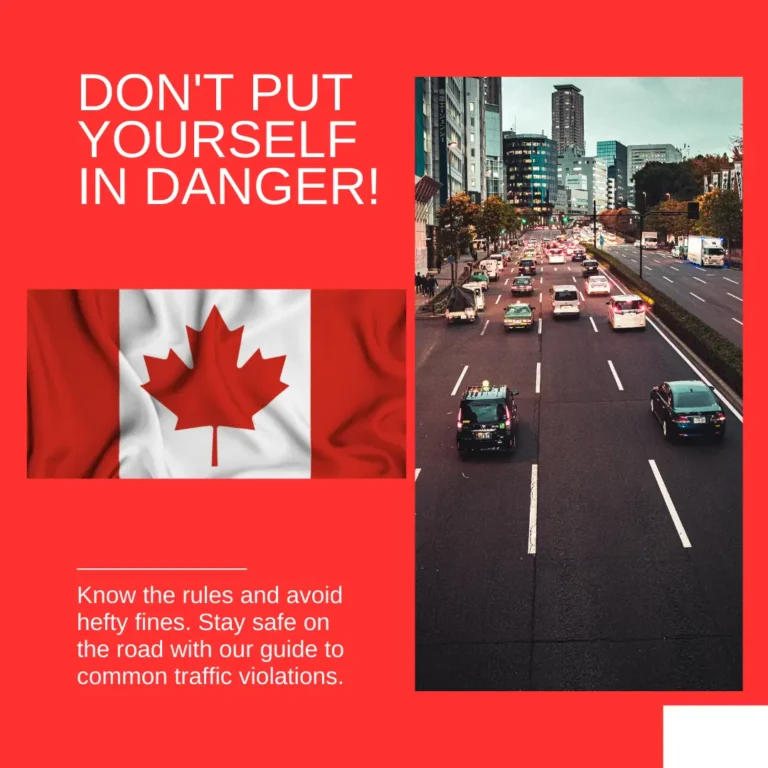How to avoid drowsy or fatigued driving
Drowsy or fatigued driving poses a significant risk on the road, impairing one’s ability to react quickly and make sound decisions. To ensure road safety, it’s crucial to adopt strategies that prevent the onset of drowsiness and fatigue while driving. This comprehensive guide explores effective measures to stay alert and focused behind the wheel.
What did drowsy and fatigued driving do to drivers?
Fatigue and drowsy driving can have profound and adverse effects on our cognitive and physical capabilities, significantly compromising our ability to operate a vehicle safely. As exhaustion sets in, our reaction times slow down, impairing our capacity to make quick decisions and respond to changing road conditions. This delayed responsiveness increases the risk of accidents, as drivers may struggle to avoid obstacles or make necessary maneuvers. Additionally, fatigue can diminish attention and concentration levels, leading to lapses in awareness that may result in missed road signs, signals, or other critical information.
Drowsy and Fatigue Driving Only happen at Night
Furthermore, the cognitive impact of drowsiness can mirror the effects of alcohol impairment, impairing judgment and reducing inhibitions. Physically, the body experiences a decline in motor coordination and muscle control, making it challenging to maintain proper lane discipline or control the vehicle’s speed. Collectively, these consequences highlight the danger of fatigued and drowsy driving, underscoring the importance of adopting preventive measures and prioritizing sufficient rest to ensure road safety for all.
There is a pervasive misconception that drowsy or fatigue driving is exclusively a nighttime concern. Contrary to this belief, the risks associated with drowsy driving extend beyond the darkness of night and can occur at any time of day. While it’s true that drowsiness tends to peak during the early morning hours and mid-afternoon, drivers are susceptible to fatigue-related impairment at various times. Factors such as inadequate sleep, long working hours, or monotonous stretches of road can contribute to daytime drowsiness.
The belief that daylight hours guarantee alertness can lead to a false sense of security, potentially underestimating the dangers associated with driving while fatigued. To combat this misconception, it’s crucial for drivers to recognize the signs of drowsiness regardless of the time of day, emphasizing the importance of staying vigilant and adopting preventive measures to ensure road safety around the clock. Adequate rest, regular breaks, and an awareness of personal energy levels are key elements in mitigating the risks of drowsy driving during both daytime and nighttime travel.

Fatigue early signs
Recognizing the early signs of fatigue is essential for drivers to intervene promptly and avoid the risks associated with drowsy driving. These subtle indicators often manifest gradually, signaling the onset of fatigue before it reaches a critical stage. One of the initial signs is excessive yawning, which the body uses to increase oxygen intake and stimulate alertness. Heavy or drooping eyelids are another early warning, leading to reduced focus and potential microsleep episodes where the eyes close briefly.
Difficulty maintaining a constant speed, frequent lane drifting, or unintentional tailgating are also signs that fatigue may be setting in, compromising one’s ability to control the vehicle effectively. Moreover, increased irritability, restlessness, or a lack of concentration are common cognitive indicators of early-stage fatigue. Recognizing these signs empowers drivers to take proactive measures such as pulling over for a short break, having a caffeinated beverage, or, ideally, finding a safe place to rest and recharge. Prioritizing early intervention can prevent the progression of fatigue and significantly reduce the risks associated with drowsy driving.
Handling Vehicle
Driving a vehicle demands a combination of physical fitness and mental alertness. First and foremost, physical well-being is crucial for effective vehicle handling. Maintaining strength, flexibility, and coordination through regular exercise ensures that a driver can adeptly manage tasks such as steering and braking. Regular health assessments contribute to sustained physical fitness, a cornerstone of safe driving.
Mental alertness is equally pivotal for handling a vehicle with proficiency. Being mentally sharp enables rapid information processing, quick decision-making, and swift responses to changing road conditions. Prioritizing sufficient sleep, managing stress, and staying hydrated are essential practices that support mental acuity behind the wheel. Emotional stability is another aspect that influences a driver’s ability to handle a vehicle effectively. A calm and collected demeanor promotes better decision-making and reduces the likelihood of engaging in aggressive or impulsive driving behavior.
Clear vision and optimal hearing are fundamental for safe driving. Regular eye examinations ensure that drivers can perceive road signs, signals, and potential hazards effectively. Similarly, maintaining hearing health contributes to early detection of auditory cues such as sirens or honks, enhancing overall situational awareness. Cognitive abilities, encompassing memory, attention, and problem-solving skills, are crucial for navigating complex traffic scenarios. Regular mental exercises and staying mentally engaged contribute to sustained cognitive abilities.
Familiarity with the vehicle is a significant factor in effective vehicle handling. Understanding the vehicle’s controls, responsiveness, and specific features is essential for confident and safe driving. Regularly checking and maintaining the vehicle ensures that it operates optimally. Reaction time, the interval between perceiving a stimulus and responding to it, is vital for avoiding collisions and responding to sudden changes in traffic conditions. Factors such as age, fatigue, and overall health can influence reaction times.
Tips for avoiding Fatigue and Drowsy Driving
- Get Adequate Sleep:
Establish a consistent sleep routine by going to bed and waking up at the same time every day, even on weekends. Create a sleep-conducive environment by keeping the bedroom dark, quiet, and cool. Consider the quality of your mattress and pillows to optimize comfort. - Recognize Warning Signs:
Familiarize yourself with the subtle signs of fatigue, such as difficulty focusing, frequent blinking, or daydreaming. If you notice any of these signs, take immediate action, such as pulling over to a safe location. - Take Regular Breaks:
Taking breaks during long drives is paramount for maintaining alertness and ensuring a safe journey. Beyond engaging in light physical activity such as stretching or a short walk, and steering clear of heavy meals to avoid inducing drowsiness, there are additional effective strategies to rejuvenate both body and mind.
Hydration is a key consideration during breaks. Staying well-hydrated is crucial for combating fatigue, as dehydration can amplify feelings of tiredness. Keep water or hydrating beverages readily available to stay refreshed throughout the journey.
Opting for smart snacks is another vital aspect of maintaining energy levels. Choose light and nutritious options such as fruits, nuts, or yogurt to provide a balanced boost without the sluggishness associated with heavy or processed foods. - Avoid Driving During Peak Sleepiness Times:
Plan your trips to align with your body’s natural wakefulness patterns. If driving during peak
sleepiness times is unavoidable, plan for additional breaks and remain extra vigilant. - Stay Hydrated and Snack Wisely:
Opt for hydrating beverages like water, and limit caffeinated drinks in the hours leading up to your intended rest. Choose snacks with a balance of complex carbohydrates and protein to provide sustained energy without causing a sudden crash. - Utilize Caffeine Strategically:
Understand that while caffeine can temporarily alleviate drowsiness, its effects vary among individuals. Experiment with different amounts and timing to determine what works best for you. Avoid excessive caffeine consumption, as it may lead to dehydration and disrupt sleep patterns. - Travel with a Companion:
Share driving responsibilities with a companion, ensuring that both drivers get adequate rest. Engage in conversation to keep each other alert and consider swapping drivers during breaks. - Create a Comfortable Environment:
Adjust not only the temperature but also the vehicle’s seating position to prevent discomfort. Consider using seat cushions or lumbar supports for added comfort. Proper ergonomics contribute to overall well-being during extended drives. - Limit Night Driving:
If night driving is unavoidable, ensure your vehicle’s headlights are in optimal condition. Reduce glare from oncoming headlights by adjusting your rearview mirror and staying attentive to road markings. - Plan Rest Stops Ahead:
Research your route in advance to identify rest areas, gas stations, or accommodations. Knowing where you can take breaks along the way helps you plan your journey more effectively. - Know Your Medications:
Consult with your healthcare provider about the potential side effects of any medications you’re taking, especially those that may induce drowsiness. Adjust medication schedules if necessary, and be aware of any warnings regarding driving. - Listen to Your Body:
Recognizing that fatigue is a natural signal from your body is a crucial aspect of responsible and safe driving. When you feel the onset of drowsiness, it becomes imperative to prioritize rest as a proactive measure. Understanding the significance of this signal allows you to take timely action to avoid the potentially severe consequences of driving while fatigued.
In instances of drowsiness, embracing the power of a short nap can be remarkably effective in restoring alertness. A brief nap of 20 to 30 minutes has been shown to enhance cognitive function and alleviate the immediate effects of fatigue. Finding a safe and suitable location to pull over for a nap can make a significant difference in your overall driving safety. Consider rest areas, parking lots, or designated rest stops as viable options for a quick revitalizing break.
Conclusion
Prioritizing road safety involves a proactive approach to preventing drowsy or fatigued driving. By incorporating these strategies into your driving habits, you not only safeguard yourself but contribute to a safer and more secure road environment for all. Remember, staying alert on the road is a shared responsibility that requires a commitment to good sleep hygiene and conscious driving practices.







